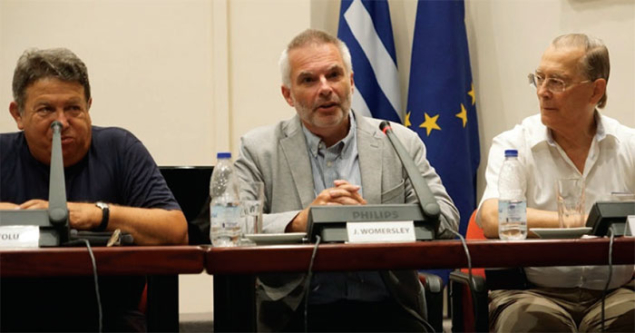
The sixth International Conference on New Frontiers in Physics (ICNFP) took place on 17–29 August in Kolymbari, Crete, Greece, bringing together about 360 participants. Results from LHC Run 2 were shown, in addition to some of the latest advances in quantum optics.
A mini-workshop dedicated to “highly-ionising avatars of new physics” brought together an ever-growing community of theorists, astroparticle physicists and collider experimentalists. There were also presentations of advances in the theory of highly ionising particles as well as light monopoles, with masses accessible to LHC and future colliders, and discussions included experimental searches both extraterrestrial and terrestrial, including results on magnetic monopoles from MoEDAL-LHC experiment that have set the strongest limits so far on high-charge monopoles at colliders.
In the “quantum” workshops, this year dedicated to the 85th birthday of theorist Yakir Aharonov, leading experts addressed fundamental concepts and topics in quantum mechanics, such as continuous variables and relativistic quantum information measurement theory, collapse, time’s arrow, entanglement and nonlocality.
In the exotic hadron workshop the nature of the exotic meson X(3872) was discussed in considerable detail, especially with regard to its content: is it a mixture of a hadronic molecule and excited charmonium, or a diquark–antidiquark state? Detailed studies of the decay modes and pT dependence of the production cross section in proton–proton collisions emerged as two most promising avenues for clarifying this issue. Following the recent LHCb discovery of doubly-charmed Χcc baryon, new results were reported including the prediction of a stable bbbud tetraquark and a quark-level analogue of nuclear fusion.
Presentations on the future low-energy heavy-ion accelerator centres, FAIR in Darmstadt and NICA at JINR in Dubna, showed that the projects are progressing on schedule for operation in the mid-2020s. Delegates were also treated to the role of non-commutative geometry as a way to unify gauge theories and gravity, self-interactions among right-handed neutrinos with masses in the warm-dark-matter regime, and the subtle physics behind sunsets and the aurora.
The conference ended with two-day workshops on supergravity and strings, and a workshop on the future of fundamental physics. Major future projects were presented, together with visionary talks about the future of accelerators and the challenges ahead in the interaction of fundamental physics and society. The conference also hosted a well-attended special session on physics education and outreach. The next ICNFP conference will take place on 4–12 July 2018 in Kolymbari, Crete.








